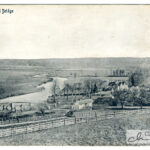Detail of postcard showing the road from Camps looking towards Midloch Farm. The rails beside the road appear disused, so the photo was presumable taken in the 1930’s
From a siding just east of Crawford railway station, a little narrow-gauge steam train once set off on a journey through the bleak beauty of the Lanarkshire hills; climbing steadily along the wild and rugged valley of the Camps Water It would have become quite a tourist attraction had it survived.
The railway formed part of Lanarkshire County Council’s ambitious scheme to build a reservoir to supply fresh, pure water to much of the County. The first parliamentary powers were granted in 1913, however it would be another seventeen years before works were completed and water flowed through the pipelines to Lanarkshire’s homes and factories. The Council took the bold and rather unusual decision to maintain full charge of the construction works, using their own direct labour rather than appointing contractors.
It was initially planned that the Caledonian Railway build and operate a standard gauge branch to carry construction materials the three and a half miles from their main line at Crawford to the site of the dam. For whatever reason (probably cost), this didn’t come to pass, and instead the Council opted to build a 3ft gauge railway from exchange sidings at Crawford, crossing the Clyde on a new bridge, and then following the general route of the old road up the valley. It had been intended that the old road would be improved so that the railway could run alongside it, however it eventually proved more practical, and only slightly more expensive, to construct a new alignment for much of the railway.
The outbreak of the first World War delayed a practical start on building the reservoir, however in 1916 construction of the railway, access roads, and other minor works was able to begin, thanks to the efforts of German prisoners-of-war who were housed in a hutted camp within the valley. The Council also established a forestry school close to the reservoir site where wounded soldiers, women volunteers and school children were brought to learn forestry skills, and to plant the steep hillsides around the reservoir site. Establishment of this woodland protected the purity of the water and would later provide pit wood for the county’s coal mines. It was argued that the railway would be of great advantage in bringing down the lumber once the trees had reached maturity, and should therefore be retained following completion of the dam.

One inch Ordnance Survey map, dated 1925 , showing the course of the railway, with the reservoir shown as “under construction”. courtesy of National Library of Scotland.
Construction of the dam began in earnest following the armistice, with the full length of the railway, including the bridge across the Clyde, being complete by 1920. Over the next decade the earthen dam wall was gradually formed, rising 90 feet above the valley floor. Over a million tons of earth were put into place, with the railway transporting most of the cast iron pipe, cement, dressed red sandstone and puddle clay used in the construction work, along with the coal needed to fuel the steam-powered machinery.
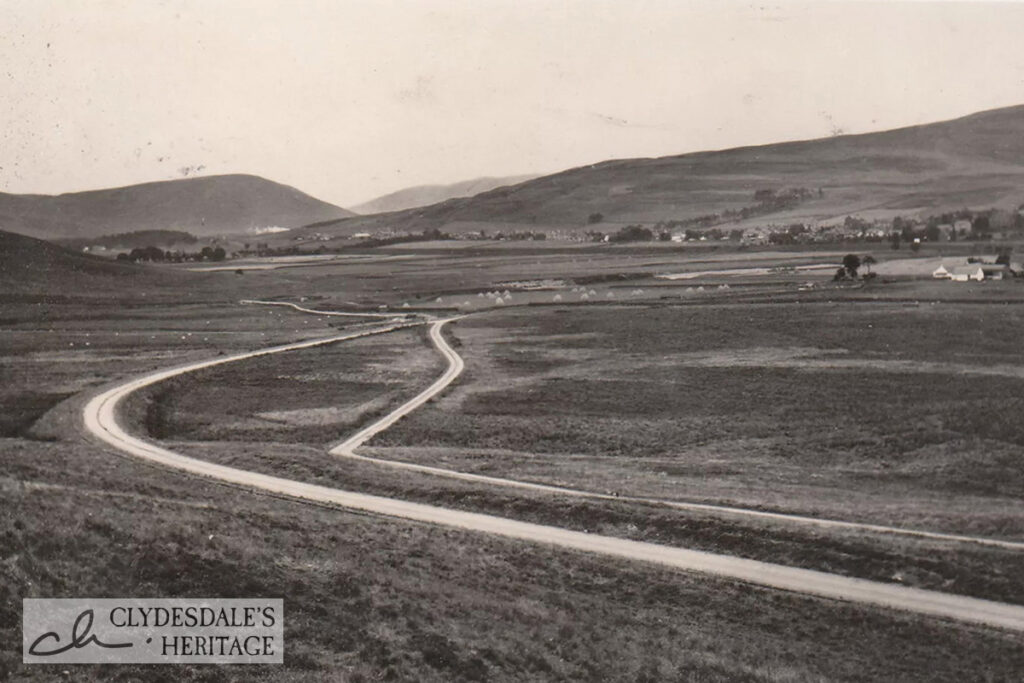

Postcard view from looking towards Midlock from Fall Hill, showing the winding route of the old road, and the smooth curve of the railway. The track seems to have been lifted by the time the photo was taken. The card is postmarked 7th June 1950. Detail from a postcard showing the narrow-gauge railway bridge, with the now-vanished suspension bridge in the foreground.
The Council bought a number of locomotives and wagons to work trains on the line up from Crawford and shunt along a changing network of temporary sidings that served construction sites and quarries. At least seven tank engines are known to have worked the line (named “Firefly”, “Cardean”, “Mary”, “Blaxter”, “Budle Crag”, “Bull”, and “Camps”), all but two purchased second-hand, and veterans of construction projects in many parts of Britain.
The new waterworks were eventually inaugurated with great ceremony in May 1930; described at the time as “magnificently situated high among the often cloud-caped hills o’ South Lanarkshire, where the wind blows keen and snells, and streams of the purest water never cease to flow”.

Much of the construction plant and machinery was sold off as soon as works were complete, however the railway line was retained in place, and much of the railway equipment stored on site. Perhaps there was consideration that the line might be of use in planned extensions to the reservoir, or to transport timber. In the event, a further World War brought a fresh demand for scrap metal, and the railway track, wagons, and remaining four locomotives were put up for sale in July 1940
Much of the route of the railway is still clearly evident. A replacement deck has been fitted to the bridge across the Clyde which now carries the public footpath that sweeps along the low embankment towards Midlock. The wide verge through the farm still marks the route of the railway, and beyond this, the current road to the dam now follows the old railway trackbed.
It’s a lovely drive on a sunny day, but it must have been still better to enjoy the wild scenery while rattling along behind a hard-working little steam locomotive.


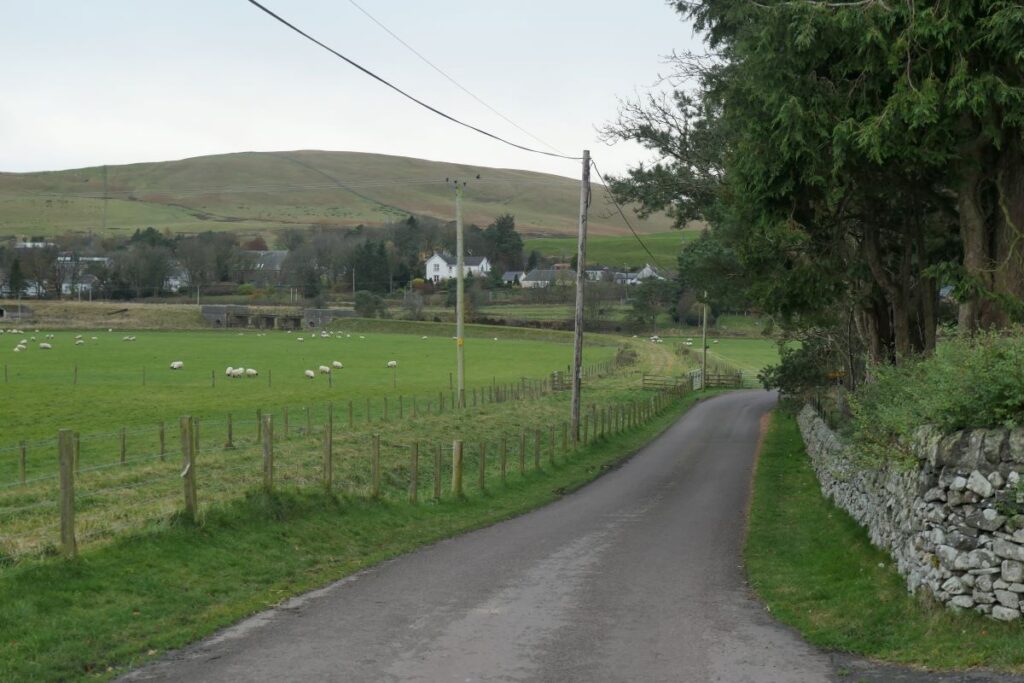
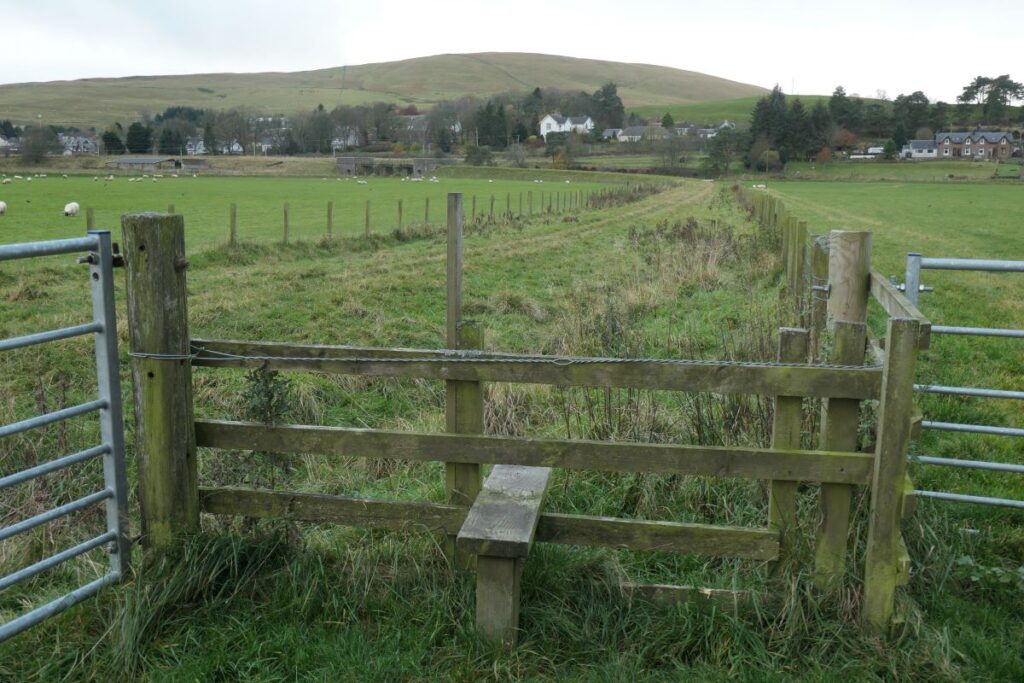
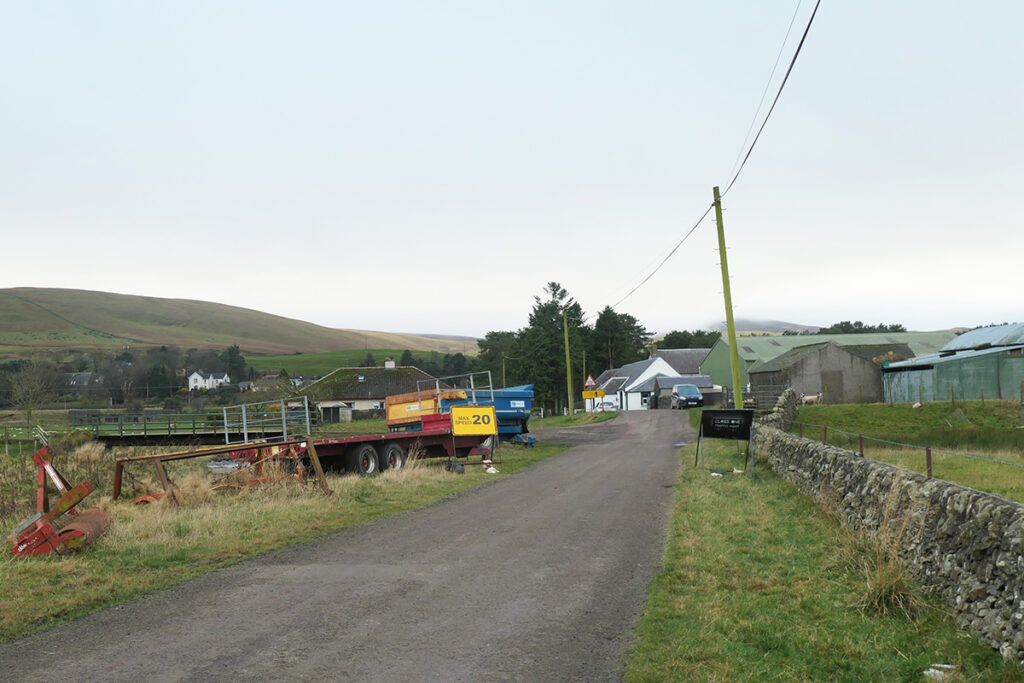

Robin Chesters, 2nd November 2024
Unless otherwise stated, all text, images, and other media content are protected under copyright. If you wish to share any content featured on Clydesdale's Heritage, please get in touch to request permission.




